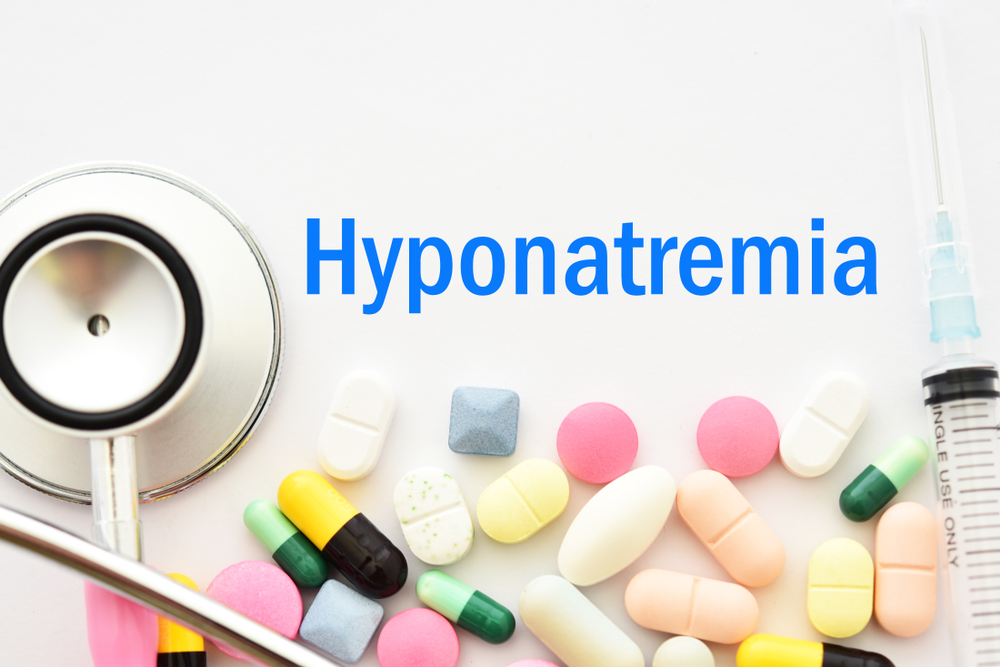Hyponatremia: Symptoms, Causes and Its Treatment

Hyponatremia is a condition that develops when there is an unusually low quantity of sodium in the blood. Sodium is an electrolyte that plays a role in the regulation of the quantity of water that is found in and around the cells of your body.
In the disease known as hyponatremia, one or more reasons, which may range from an underlying medical condition to consuming an excessive amount of water, lead to a dilution of the sodium that is normally found in the body. When this occurs, the amount of water in your body increases, and as a result, your cells start to inflate. This swelling may cause a wide range of health issues, from relatively minor ones to others that are potentially fatal.
The therapy for hyponatremia focuses on improving the underlying issue in order to cure the disease. It's possible that all you need to do to treat your hyponatremia is cut down on the number of fluids you consume each day. In some instances of hyponatremia, you could need intravenous electrolyte solutions along with the prescribed drugs.
Symptoms
Some indications and hyponatremia symptoms include the following:
- Nausea and vomiting
- Headache/Confusion
- a decrease in energy along with tiredness and weariness
- agitation and a tendency for hostility
- Weakness in the muscles, as well as spasms or cramps
- Seizures
- Coma
Causes
Your body has an important need for sodium to fulfil. It assists in the maintenance of normal blood pressure, promotes the function of your neurons and muscles, and maintains the proper balance of fluids in your body.
Sodium levels in the blood that are considered normal range from 135 to 145 milliequivalents per litre (mEq/L). Hyponatremia develops when the amount of sodium in your blood drops below 135 milliequivalents per litre.
Hyponatremia may be caused by a wide variety of medical illnesses and circumstances related to a person's way of life, including the following hyponatremia causes:
- Taking certain drugs - Taking certain medications, such as certain water pills (diuretics), antidepressants, and pain medications, can interfere with the normal hormonal and kidney processes that maintain sodium concentrations within a healthy normal range. This can cause sodium levels to rise above the healthy normal range.
- Problems with the heart, kidneys, and liver - The accumulation of fluids in the body, which may be caused by conditions such as congestive heart failure or certain disorders that affect the kidneys or liver, can dilute the sodium that is already there, resulting in a lower overall amount.
- Syndrome of improper anti-diuretic hormone (SIADH) - When you have this illness, your body produces an abnormally high amount of the hormone known as anti-diuretic hormone (ADH), which causes your body to retain water instead of excreting it regularly via your urine.
- Dehydration - Dehydration may be caused by persistent, severe vomiting or diarrhoea as well as other factors. This results in the loss of electrolytes such as salt from your body and also leads to a rise in ADH levels.
- Consuming an excessive amount of water - A low sodium level may be the result of drinking an excessive quantity of water since it can overwhelm the kidneys' capacity to eliminate water it happens in certain psychiatric disorders. Because you lose sodium via sweating, participating in endurance events like marathons and triathlons, in which you drink excessive amounts of water, may also cause the sodium level in your blood to become diluted.
- Alterations in hormone levels - If you suffer from adrenal gland insufficiency, also known as Addison's disease, your adrenal glands will be unable to generate the hormones that are necessary to keep the salt, potassium, and water levels in your body in proper balance. Low thyroid hormones may also cause low sodium.
Risk Factors
Your risk of hyponatremia may be increased by any or all of the following factors:
- Age - A higher number of causes that might lead to hyponatremia may be present in older persons. These factors may include physiological changes that come with ageing, the use of certain drugs, and an increased risk of acquiring a chronic condition that disrupts the body's salt balance.
- Certain medicines - Thiazide diuretics, in addition to some antidepressants and pain drugs, are among the classes of medications that might raise your chance of developing hyponatremia. Additionally, the recreational drug ecstasy has been connected to incidences of deadly hyponatremia.
- Conditions that result in a decreased amount of water being excreted by the body - Kidney illness, the syndrome of inappropriate anti-diuretic hormone (SIADH), and heart failure are only few of the medical problems that might raise your risk of hyponatremia.
- Activities that push your body to its limits - A higher risk of hyponatremia is posed to those who consume an excessive amount of water while competing in long-distance, high-intensity athletic events such as marathons, ultramarathons, triathlons, and similar competitions.
Complications
- Chronic hyponatremia is characterised by a progressive reduction in sodium levels over the course of at least 48 hours, with symptoms and effects that are often less severe.
- Acute hyponatremia is characterised by a sudden decline in sodium levels, which may have potentially life-threatening consequences. These consequences include fast brain swelling, which can lead to coma and even death.
Treatment
You may be able to avoid hyponatremia by taking the following hyponatremia treatment
- Get some formal training - Be mindful of the signs and symptoms of low blood sodium if you have a medical condition that raises your risk of hyponatremia or if you use diuretic drugs. Both of these factors may increase your likelihood of developing hyponatremia. Always discuss the potential side effects of a new medicine with your primary care physician.
- When participating in activities of high intensity, you should use prudence - During a competition, athletes should consume just the same amount of liquids as they lose via perspiration. When it comes to determining how much water or other fluids you need to consume, thirst is often a reliable indicator.
- During strenuous activity, you should think about consuming certain sports drinks. - When competing in long-distance events like marathons and triathlons, as well as other strenuous activities, it is a good idea to see your physician about switching from water to sports drinks that include electrolytes rather than drinking plain water.
- Drink water in moderation - In most cases, the greatest indicators of how much water you need are the sensation of thirst as well as the colour of your urine. It is a good sign that you are receiving enough water if you are not thirsty and your pee is a light yellow colour.
Conclusion
Anyone who gets severe signs and symptoms of hyponatremia, such as nausea and vomiting, disorientation, seizures, or loss of consciousness, should seek immediate medical attention at an emergency facility.
Make an appointment with your primary care provider if you are having symptoms such as nausea, headaches, cramps, or weakness and you are aware that you are at risk for hyponatremia. Your doctor may advise you to seek emergency medical attention depending on the severity of these signs and symptoms as well as how long they have been present.






